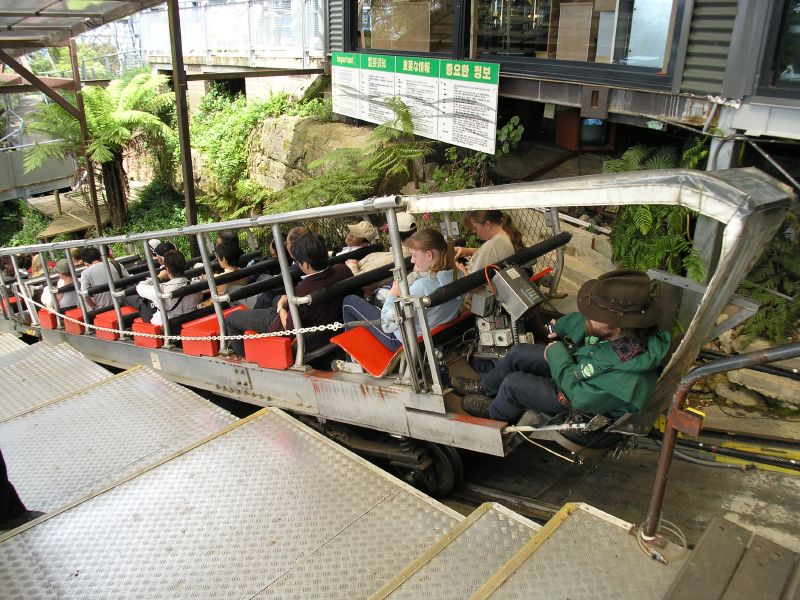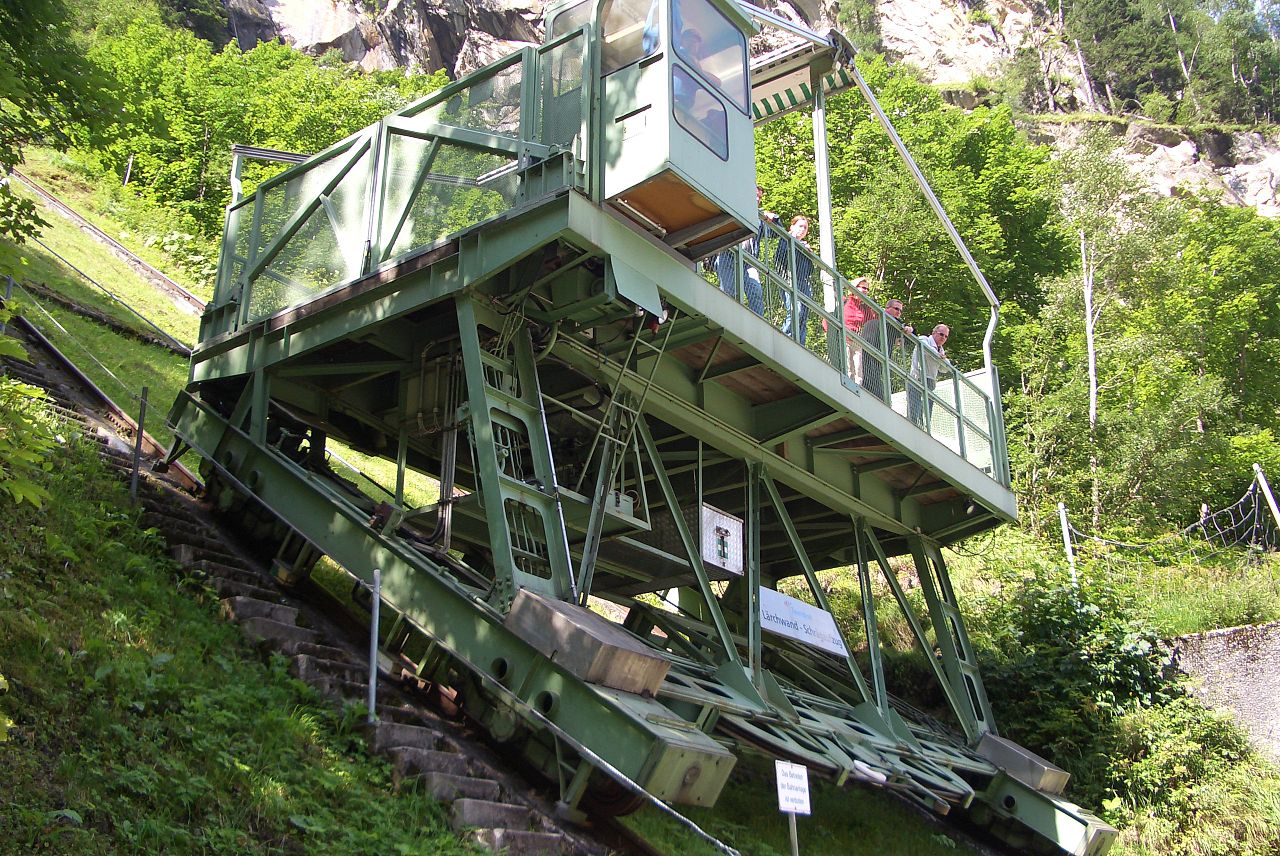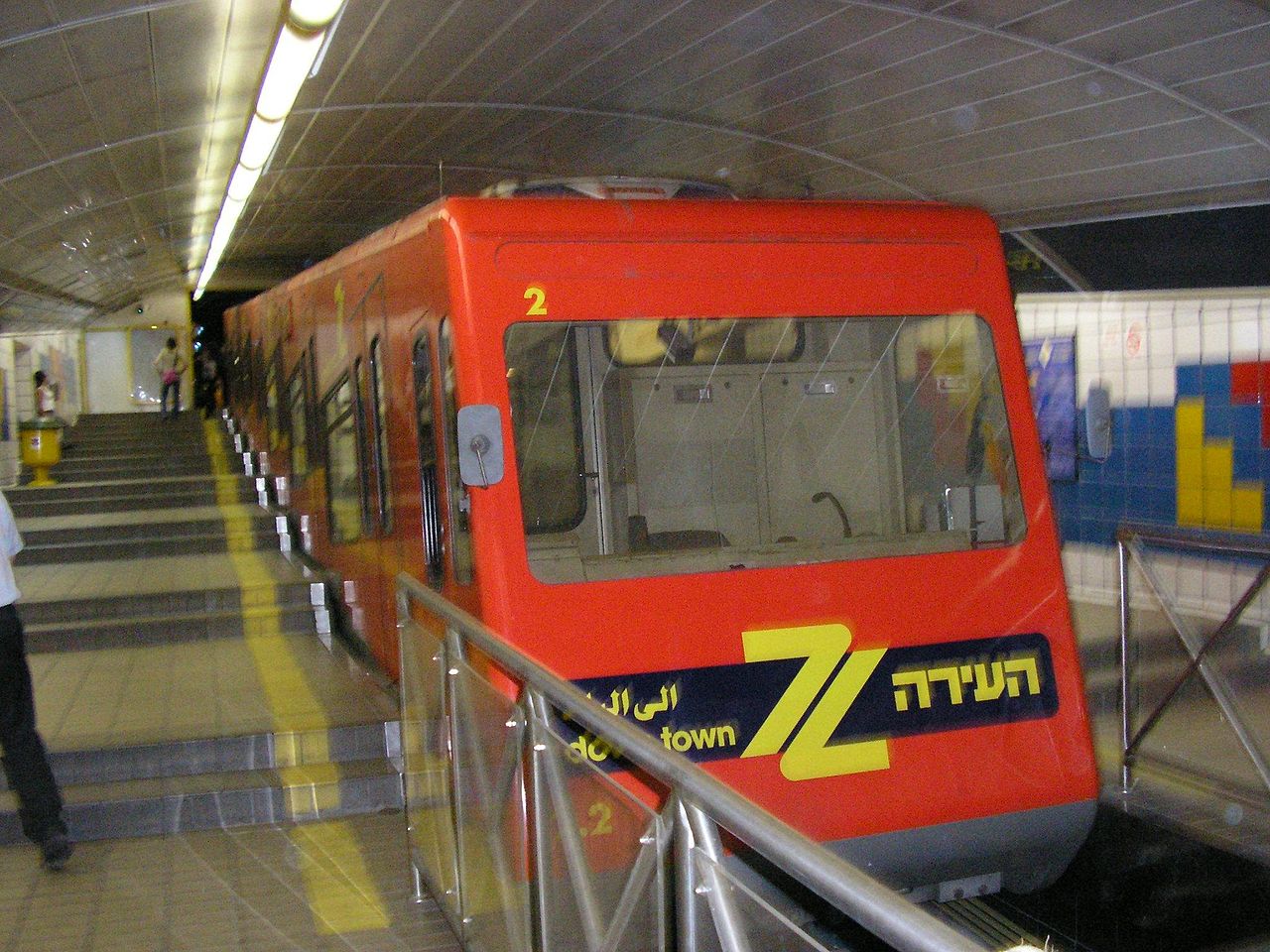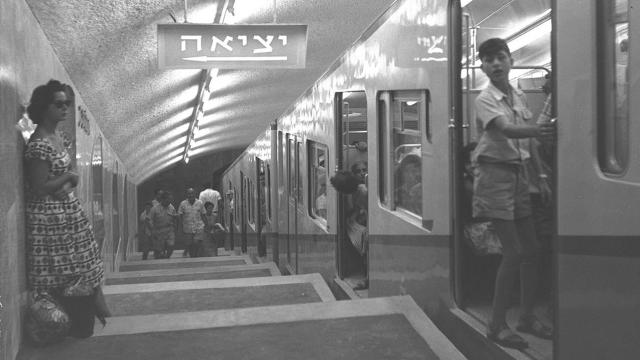Walk? Like up that giant hill? Yeah, no. This ain’t the 15th century, we have funiculars for that now. In fact, here are seven of the swankiest ground-based gondolas to ever put the “fun” in “climbing steep-arse inclines without breaking a sweat”.
Wait, What the Hell Is a Funicular?
A funicular is a mechanical, ground-based means of transportation up hillsides, sort of a mix between a street car and an elevator — essentially, they’re gondolas that aren’t suspended from overhead cables but rather roll atop mine car tracks.
First developed in the early 16th century in Austria, funiculars operate much the same way modern elevators do: the passenger car is winched up a hill via an attached rope connected to a second car or similar counterweight that pulls the first car up the hill as it descends (thereby minimising the amount of energy the system as a whole needs to operate). This winch can be human-, animal- or motor-driven, depending on the age and design of the system — of which there are many, many variations.
Similarly, different funiculars perform different functions. Many power stations and dams throughout Europe have employed — and still maintain — funiculars as a means of efficiently transporting building and maintenance equipment up to their crowns. Others in the US and Asia are instead used to bring tourists up to scenic vistas and overlooks without forcing them to physically scale treacherous slopes.
The Oldest One

The world’s first funicular was constructed in Salzburg, Austria, at the start of the 16th century. Dubbed the Reisszug, this rudimentary system was devised and constructed at the behest of Cardinal Matthäus Lang, who would later go on to become the Archbishop of Salzburg, as a means of ferrying goods and people to the upper courtyard of the castle, which sits atop a small hill overlooking the rest of the town.
The Reisszug was originally built from wooden slats and winched up the hill by a hemp rope pulled by a team of oxen. Though the current system has traded in the wood, hemp, and oxen for aluminium, braided steel, and electric motors, it remains operational and is widely regarded as the world’s single oldest railway system still in use. [Wiki]
The Steepest One

Picture: Charlie Brewer
Funiculars can also be quite spry when they need to be. The funicular at Katoomba Scenic Railway in Australia — a private tourist attraction nestled amid the world-heritage-listed Blue Mountains — operates on one of the steepest railways on the planet, climbing more than 400m up a 52-degree incline during its trek.

Picture: Charlie Brewer
It was originally built in the 1880s, to haul coal and oil shale from mining operations in the Jamison Valley up to the rim where it was trucked off for processing. Though the coal mine closed in 1945, the funicular remained in operation as the site was converted to a tourist attraction and kept running until 2013 — when it was taken offline for four months to modernize the tracks and carriages.
That said, both the Johnstown Inclined Plane in Johnstown, Pennsylvania and the Lookout Mountain Incline Railway in Chattanooga, Tennessee both claim to be even steeper, tackling grades that max out at 70.9 and 72 degrees respectively, albeit only for small portions of their overall climbs. [Wiki]
The Most American One

Picture: PD Photo.org
Over the last five centuries, funicular technology has spread from Europe, throughout the Old World and into the New. One of the most famous funiculars in America is actually located in downtown Los Angeles — the Mecca of American car culture. Known as Angel Flight, the original iteration of this narrow-gauge system measured just 700m wide at the tracks, which connected Hill and Olive Streets in the Bunker Hill neighbourhood via a pair of individually winched funicular cabs, from 1901 until its controversial closure in 1969. Bunker Hill was a lower-income neighbourhood of 22,000 working-class renters who were evicted and displaced so that the neighbourhood could be razed and redeveloped as an upscale, mixed-use residential/shopping district.
Angels Flight sat in storage for more than a quarter century until 1996, when it was resurrected a short distance away at Hill Street and California Plaza. However, in 2001 an accident in which one funicular cab nearing the top of the climb suddenly lost traction, slid back down the hill, and slammed into the other cab at the lower boarding platform, killed an elderly woman and injured several others. The subsequent NTSB investigation determined that the system’s shoddily-designed gear train, as well as a lack of modern safety features like track brakes, were the primary contributors to the accident. This forced Angels Flight’s closure for another nine years as the system was overhauled and modernized. It reopened in 201o and has been running without much incident since then — offering riders trips to the top for just 50 cents a pop. [Angels Flight]
The Longest One
Summiting the 3500m high Niesen Mountain in Bern Switzerland takes less than a half hour aboard the world’s longest funicular. The two-part Niesenbahn, which has been shuttling people up these slopes since 1910, runs from the mountain’s peak down to the town of Mülenen in the valley below. The lower leg of the system is 2111m long and rises nearly 1200m up a 66-degree gradient, although the speedy funicular cabs can haul up to 60 passengers at a time, making the trek in just 13 minutes. The upper track measures 1388m long with a 670m rise and can be surmounted in just over 12 minutes. The system operates from late April to mid November as weather allows. [Niesenbahn]
The Least Pronounceable One

Picture: Motorbiker
Europe’s largest funicular, the Lärchwandschrägaufzug, is a wide-gauge system originally designed to haul construction equipment, not sightseers. Built in 1941 to service Austria’s Kaprun High Altitude Reservoirs and power plants, the original system could tote up to eight tonnes at a time. However, as the reservoirs and the dams that they feed expanded size and capacity over the years, the Lärchwandschrägaufzug has grown in kind.
The second iteration, which entered service in 1952, could move up to 55 tonnes of equipment per trip up it’s double-wide tracks. However, upon the completion of the Mooserboden and Wasserfallboden reservoirs in the early 1980s — both of which sit more 1.6km above sea level — the system once again underwent renovations, this time to accommodate a growing contingent of visiting tourists and hikers. [Wiki – Verbund]
The Shortest One

Nothing says these railways have to be enormous to be useful. The underground Carmelit funicular system in Haifa, Israel serves just six platforms over a span of 1.8km and a rise of less than 280m — that makes it not only the shortest funicular route in the world but one of the smallest metro systems in general (only the 570m long Istanbul Tünel is smaller). It opened in 1959 and ran for 31 years before being shuttered in 1986 for extensive renovations, reopening in 1992.
These are just a few of the many funicular railways tucked into hillsides around the world. Have you ever ridden one? Was it the nail-biting, white-knuckle ascent you’d always dreamed it would be? If so, let us know in the comments below!
